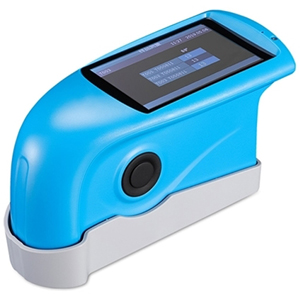How Many Measurement Angles does the Gloss Meter Have?
At present, the common gloss meters on the market mainly include 20°, 60° and 85° measurement angles. Different measurement angles are suitable for surfaces with different glosses. For industries such as paper, 45° and 75° measurement angles are used. Due to the different measurement angles, the gloss values we measure on the surface of the object are different. In order to accurately assess the surface gloss of the object, it is necessary to choose a gross meter with a suitable measurement angle.
 Different Measurement Ranges of Gross Meter have Different Applications
Different Measurement Ranges of Gross Meter have Different Applications
- The 20° gloss meter is mainly suitable for high gloss paper and cardboard such as cast-coated paper, glossy paper, glazing paper, etc.
- The 45° gloss meter is mainly suitable for the determination of metal composite paper and paperboard such as aluminum foil paper and vacuum aluminized paper.
- The 60° gloss meter is mainly suitable for various papers, coatings, paints, etc.
- The 75° gloss meter is mainly suitable for coated paper and board, but also for uncoated paper and board or paper and board with low printing gloss.
- The 85° gloss meter is mainly used for camouflage coatings, low gloss paints, etc.
How to Choose the Right Measurement Angle of Gloss Meter?
For different object surfaces, the suitable measurement angles are also different. General materials can be measured with a 60° gloss meter. For high gloss materials, a 20° gloss meter can be used. For low gloss materials, an 85° gloss meter can be used.
If the surface gloss of the object is uncertain, it can be detected by a three-angle gloss meter. Each range is easy to measure with its own angle. To know which angle to measure at, it's a good idea to start at 60°. If the result is between 10-70GU, the material is semi-gloss, which is better measured at this angle. If the result is less than 10GU, the product is low gloss and should be measured at 85°. If the result is above 70GU, the product is high gloss and is better measured at 20°. If you want to compare the difference in gloss of two samples, you cannot follow the above method. Only the same angle can be selected for measurement. Under different angles, the measured gloss values are different. If the selected measurement angles are different, there is no way to compare the measurement results.

